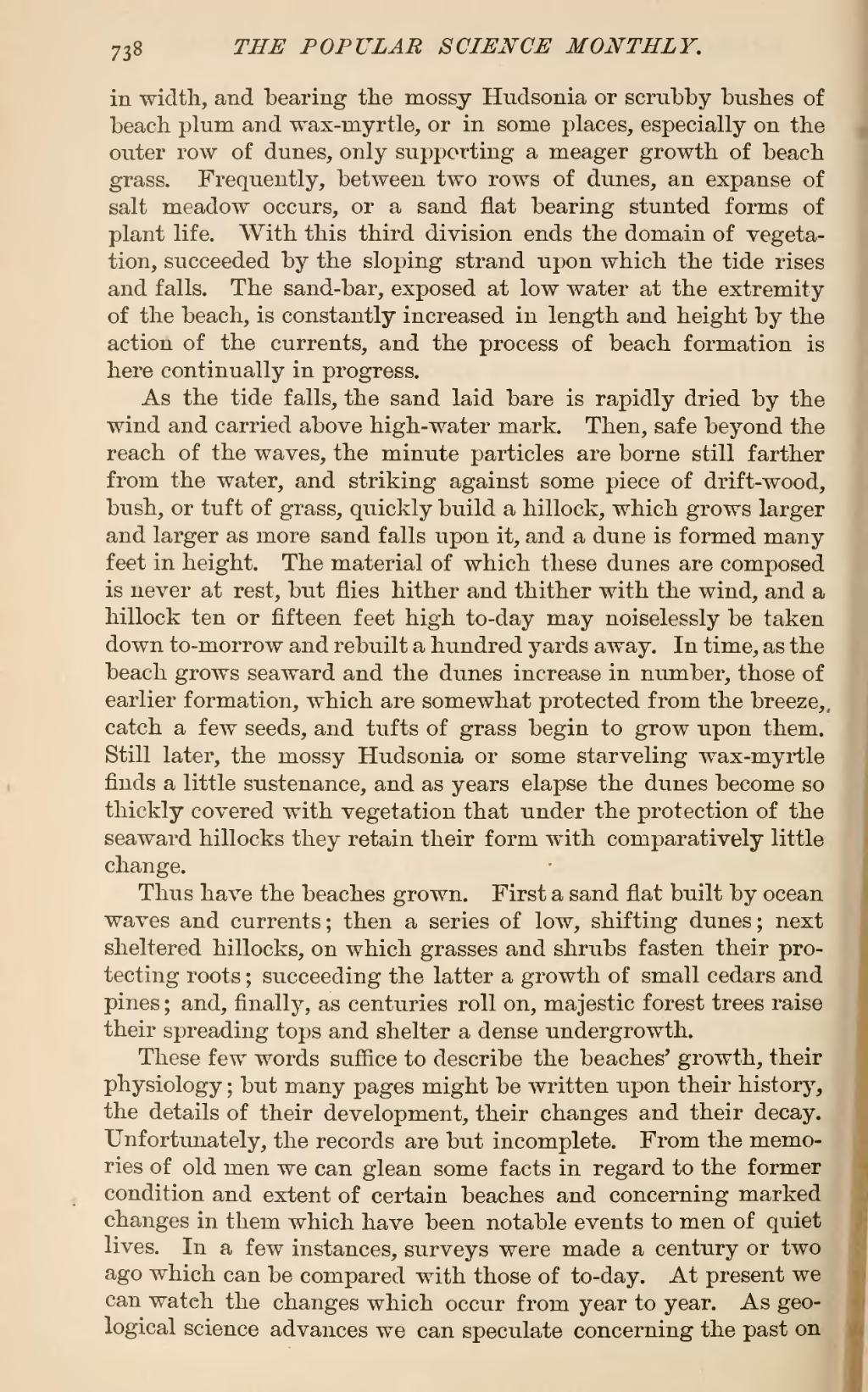in width, and bearing the mossy Hudsonia or scrubby bushes of beach plum and wax-myrtle, or in some places, especially on the outer row of dunes, only supporting a meager growth of beach grass. Frequently, between two rows of dunes, an expanse of salt meadow occurs, or a sand flat bearing stunted forms of plant life. With this third division ends the domain of vegetation, succeeded by the sloping strand upon which the tide rises and falls. The sand-bar, exposed at low water at the extremity of the beach, is constantly increased in length and height by the action of the currents, and the process of beach formation is here continually in progress.
As the tide falls, the sand laid bare is rapidly dried by the wind and carried above high-water mark. Then, safe beyond the reach of the waves, the minute particles are borne still farther from the water, and striking against some piece of drift-wood, bush, or tuft of grass, quickly build a hillock, which grows larger and larger as more sand falls upon it, and a dune is formed many feet in height. The material of which these dunes are composed is never at rest, but flies hither and thither with the wind, and a hillock ten or fifteen feet high to-day may noiselessly be taken down to-morrow and rebuilt a hundred yards away. In time, as the beach grows seaward and the dunes increase in number, those of earlier formation, which are somewhat protected from the breeze, catch a few seeds, and tufts of grass begin to grow upon them. Still later, the mossy Hudsonia or some starveling wax-myrtle finds a little sustenance, and as years elapse the dunes become so thickly covered with vegetation that under the protection of the seaward hillocks they retain their form with comparatively little change.
Thus have the beaches grown. First a sand flat built by ocean waves and currents; then a series of low, shifting dunes; next sheltered hillocks, on which grasses and shrubs fasten their protecting roots; succeeding the latter a growth of small cedars and pines; and, finally, as centuries roll on, majestic forest trees raise their spreading tops and shelter a dense undergrowth.
These few words suffice to describe the beaches' growth, their physiology; but many pages might be written upon their history, the details of their development, their changes and their decay. Unfortunately, the records are but incomplete. From the memories of old men we can glean some facts in regard to the former condition and extent of certain beaches and concerning marked changes in them which have been notable events to men of quiet lives. In a few instances, surveys were made a century or two ago which can be compared with those of to-day. At present we can watch the changes which occur from year to year. As geological science advances we can speculate concerning the past on
